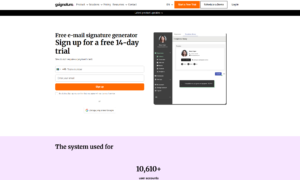Here’s the thing—cyber crime isn’t slowing down. As our lives become more connected to the digital world, cybercriminals are finding new, scarier ways to break in. We’re talking data breaches, identity theft, ransomware attacks, and more. But hey, it’s not all doom and gloom. You can stay one step ahead of the hackers with some smart moves. Let’s break it down and talk about what you can do now and in the future to protect yourself from the dark side of the internet.
Why Cyber Crime Is Blowing Up
In case you haven’t noticed, the internet is where everything’s happening now. From banking and shopping to working from home and even dating—our lives are practically online. That’s why cybercriminals are loving this era. More digital activity means more opportunities for them to strike.
But why is it blowing up so much? Well, the tools to hack and steal data have never been more accessible. Some people can literally buy hacking software off the dark web, and boom, they’re in business. Even worse, companies that store your personal data aren’t always doing the best job of keeping it safe. So, yeah, buckle up—this is why cybercrime is blowing up, and you should absolutely care.
What Is Attack Surface Protection, and Why Should You Care?
Okay, so let’s talk about attack surface protection—this is one of the biggest ways companies and individuals can defend against cybercrime, and it’s becoming more important every day. Here’s why: your attack surface is basically all the entry points a hacker could use to break into your system. Think about it—every device, app, and software you use is like a door that someone could open.
With attack surface protection, you’re reducing the number of those doors or at least making sure they’re locked tight. For companies, it’s like locking down every possible point of entry, so even if a hacker gets through one, they’re blocked at the next. For individuals, it could mean something as simple as updating your software regularly or avoiding sketchy websites. No one likes updates, but hey, they’re the easiest way to close doors that hackers might want to open.
The Power of Multi-Factor Authentication
If you’re not already using multi-factor authentication (MFA), what are you doing? Seriously, it’s one of the simplest ways to protect yourself online. Instead of just relying on a password—which, let’s face it, most of us recycle or make way too easy—MFA requires a second form of verification. It could be a code sent to your phone or even something like facial recognition.
In the world of cybercrime, passwords alone are child’s play. A hacker could crack your password in seconds if it’s weak. But when you add that second layer with MFA, it’s like putting a deadbolt on your front door. Even if they have your password, they still need your phone or fingerprint to get in. So yeah, if you haven’t set up MFA, it’s time to get on it.
Future Tech: AI-Driven Cybersecurity
Let’s get into the future of cybersecurity, where artificial intelligence (AI) is taking the driver’s seat. AI isn’t just for self-driving cars—it’s becoming a major player in cyber defense. Imagine having an AI system that can monitor your network 24/7, spotting unusual activity and blocking threats before you even know they exist.
Why’s AI such a big deal in the fight against cyber crime? It’s because it can analyze massive amounts of data in real time, spotting patterns that humans might miss. And as cyber criminals start using more sophisticated tools (we’re looking at you, deepfakes and AI-powered hacks), we’re going to need equally sophisticated defenses. AI can adapt to new threats faster than human cybersecurity experts, making it a game changer for protecting our digital lives.
Staying Smart on Social Media
Social media is fun—until it becomes a hacker’s playground. Think about how much personal info you share on platforms like Instagram, Facebook, or Twitter. Your location, your interests, even your birthday—it’s all there for the taking. Hackers can use that information to guess passwords, steal your identity, or trick you into giving up even more sensitive data.
So, how do you protect yourself? First off, stop oversharing. Do you really need to check in at every single restaurant or post your daily routine? The less you share, the less hackers have to work with. Also, always review your privacy settings. Most social media platforms have settings that let you control who can see your posts and personal info. Use them to your advantage.
Keeping Your Devices Locked and Loaded
Your phone, laptop, and tablet—they’re all potential targets for cybercriminals. But you don’t have to make it easy for them. One of the simplest ways to keep your devices safe is to always update your software. Yeah, I know, it’s a pain when your phone decides to update in the middle of something important. But those updates usually contain security patches that can close vulnerabilities hackers love to exploit.
Another easy win? Use encryption. Many devices come with built-in encryption tools that scramble your data, making it unreadable to anyone who doesn’t have the key. And, of course, don’t forget about your passwords—make them strong and unique. You’d be surprised how many people still use ‘password123’ for everything. Don’t be that person.
Protect Your Digital Life, Because Cyber Crime Isn’t Going Anywhere
So here’s the reality—cybercrime is only going to get worse. As tech advances, so do the tools that hackers use to mess with our digital lives. But that doesn’t mean we’re helpless. The bottom line? Stay sharp, stay updated, and don’t let the bad guys win. Your digital life is worth protecting, so start today.





























